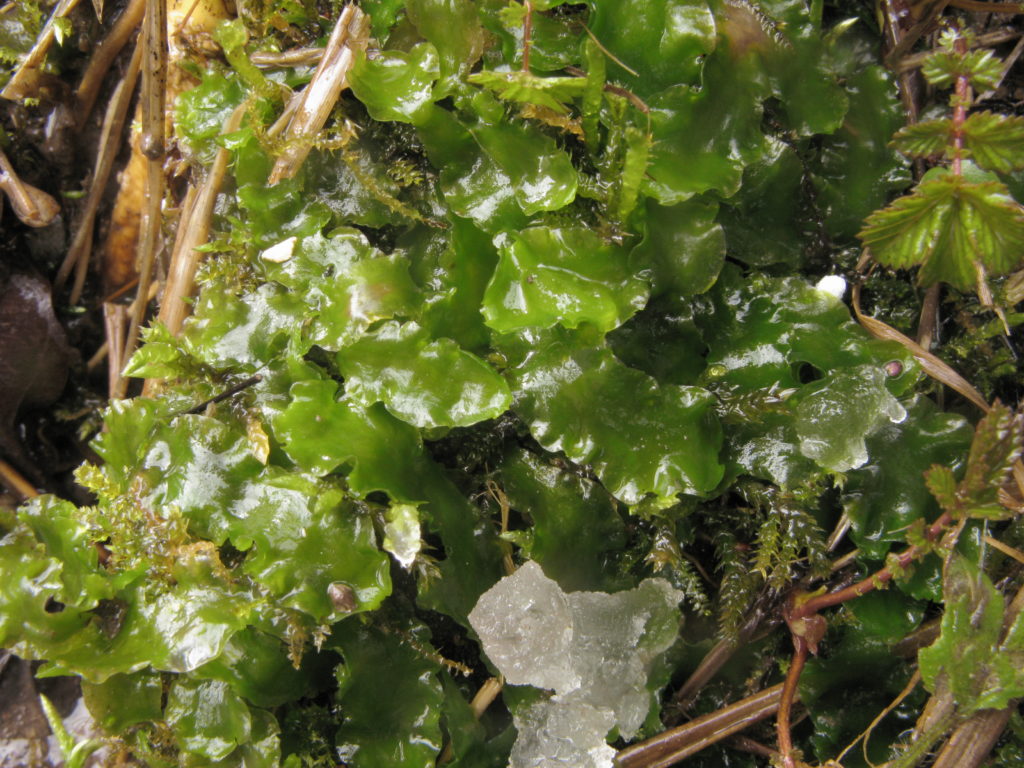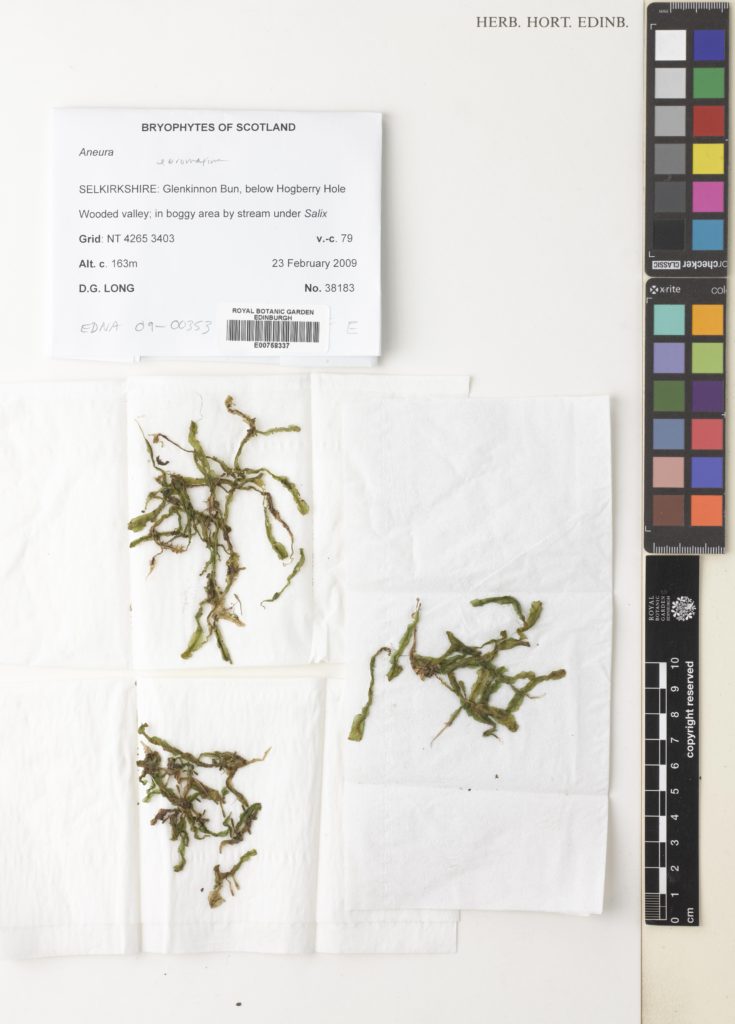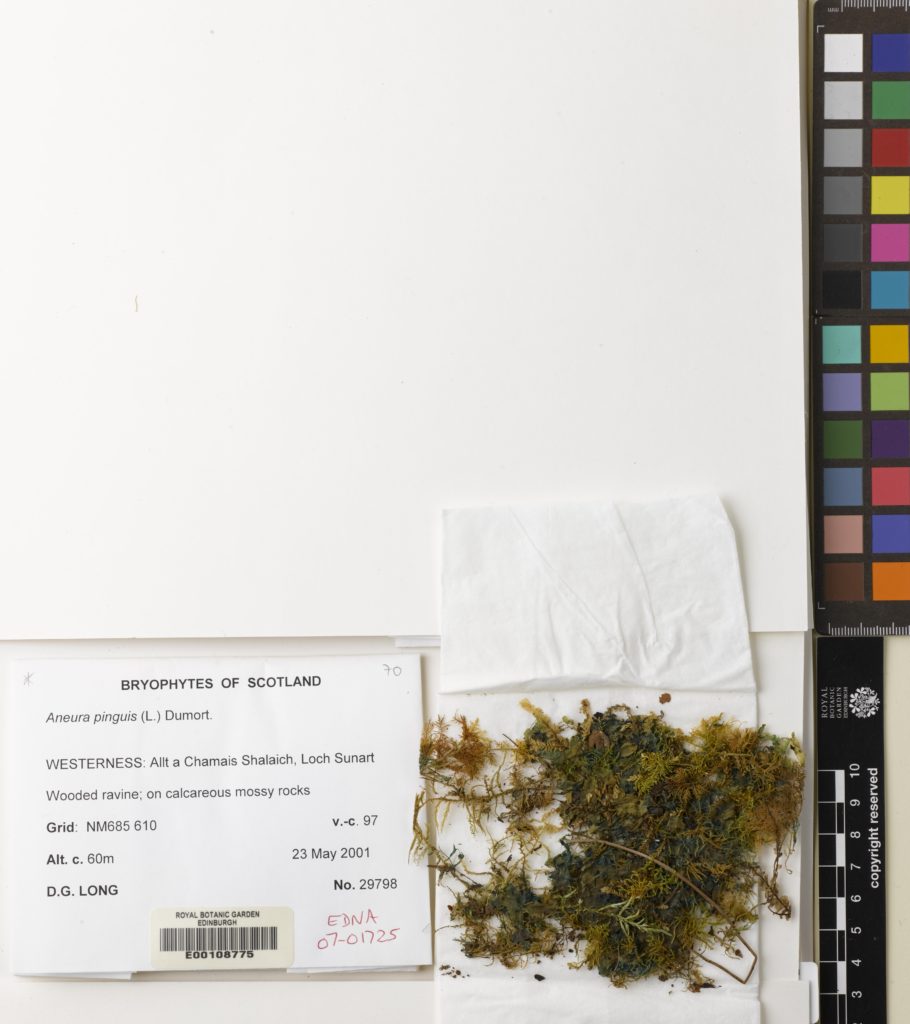The simple thalloid liverwort Aneura has become a flagship genus for DNA barcoding at RBGE. Only a single widespread species, Aneura pinguis, is traditionally recognized in the UK, with a second species, the non-photosynthetic Aneura mirabilis, recently transferred from Cryptothallus. Early isozyme work from Poland showed, however, several distinct lineages within Aneura pinguis. Our DNA barcoding project, in collaboration with researchers Lars Söderström and Kristian Hassel at NTNU in Norway and Ana Séneca in Portugal, sampled over 350 accessions of Aneura for four loci. This work focuses mostly on accessions from the UK and Norway, although plants from other locations have been included whenever we had material. Sequence analyses have shown many very distinct molecular lineages within Aneura, while preliminary morphological work has identified some potential morphological characters that may be useful for species circumscription, including oil body shape and size, and rhizoid colour. A manuscript in preparation assigns names to nine of these new species, seven of which are found in the UK.

To link to the DNA barcoding sequence data, the herbarium voucher specimens for the accessions that were sequenced needed to be digitized, and the images, sequence files and all accompanying data submitted to the official Barcode of Life BOLD database. As the first step in this process, we obtained funding from the Sibbald Trust to database and digitize our Aneura specimens.
All 473 herbarium specimens of Aneura held at RBGE were successfully digitized by University of British Columbia/RBGE grad student David Bell. This took longer than expected due to the way that we curate our bryophyte specimens, with multiple specimens usually mounted onto a single herbarium sheet. These specimens are contained within paper packets, often with several mini-packets within, and the contents of each of these need to be digitized before being combined into a single image file in Photoshop.

While in most cases these images are not going to provide the microscopic levels of detail required to identify bryophytes morphologically, they should certainly provide a useful first stopping point for bryologists interested in our species concepts in Aneura once we have them linked to the barcode sequences and our new taxonomy of the genus in Europe.

